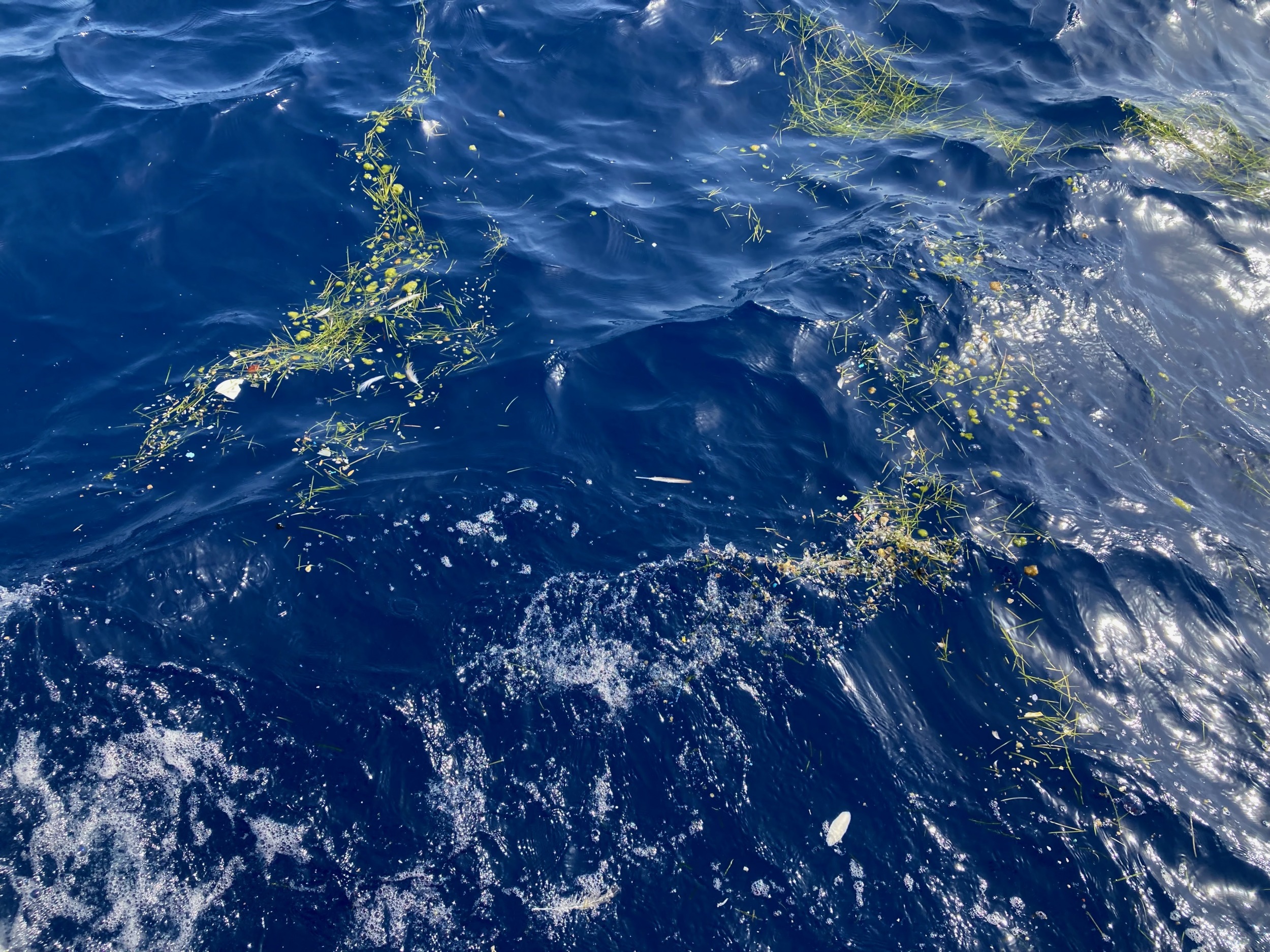The IMPLAMAC Expedition, of IU-ECOAQUA and Aalborg University, identifies three of these accumulations in Special Conservation Areas (ZEC for its acronym in Spanish) in the south of Gran Canaria and Tenerife, with great danger for turtles and other marine species
An expedition formed by researchers from the University of Las Palmas de Gran Canaria, belonging to the group of Ecophysiology of Marine Organisms (EOMAR) of the University Institute for Research in Sustainable Aquaculture and Marine Ecosystems (ECOAQUA), and researchers from the University of Aalborg, Denmark, have located three areas in the south of Gran Canaria and Tenerife where the so called “Marine Litter Windrows”, lines of accumulation of marine debris, with a high presence of microplastics, in which fish larvae and remains of marine plants are also concentrated, which when mixed become a potential danger to turtles and other marine animals, which come to feed and get caught in nets and lines.
 Sampling aboard the sailing vessel "Windfall" during the IMPLAMAC - ZEC Expedition in the municipality of Mogán.
Sampling aboard the sailing vessel "Windfall" during the IMPLAMAC - ZEC Expedition in the municipality of Mogán.
This is one of the main conclusions of a study, which was carried out in the Canary Islands within the IMPLAMAC project of the Interreg MAC 2014-2020 program, co-financed with FEDER funds. Its results have recently been published in the prestigious journal Marine Pollution Bulletin, and among its conclusions, its authors indicate that the efforts of study, cleanup, and rescue of marine fauna in Canary waters should focus in these specific points, since Marine Litter Windrows concentrate more than 90% of the floating marine litter in the sea.
Scientists analyzed the presence of floating microplastics and the abundance of zooplankton in 15 points of the Canary archipelago during an expedition aboard the sailing ship “Windfall” in October 2021, in which they sailed for two weeks, from Alegranza to La Gomera, collecting samples.
The work allowed the detection of litter accumulation lines, two in the south of Gran Canaria, and another in the south of Tenerife. These marine litter windrows concentrate a large amount of marine debris, remains of fishing nets and microplastics, but also remains of algae, marine plants and fish larvae. During the campaign led by the University Institute ECOAQUA of the ULPGC an entangled turtle was found in one of these marine litter lines in the south of Gran Canaria, which was happily rescued and returned to the sea by the crew.
As can be verified by these scientists from their experience, it’s very common to find turtles that die entangled in lines and nets in these garbage lines, when they come in search of food (remains of seba leaves and fish), precisely because they end up accidentally entangled due to the large presence of litter. In fact, in these accumulation points, the concentration of microplastics is even higher than that of plankton.
 Turtle entangled in fishing net - ZEC in Teno-Rasca
Turtle entangled in fishing net - ZEC in Teno-Rasca
The study showed that the areas with the highest concentration of microplastics in the south of Gran Canaria and Tenerife coincided with the Special Areas of Conservation (ZEC) of Mogán and Teno-Rasca, respectively. These areas are home to a great biodiversity that is being affected by plastic pollution, especially by fishing nets, drifting buoys and ingestion of microplastics.
The ZEC areas have a significant importance for the protection of marine organisms, some of them protected as vulnerable or endangered species, such as loggerhead turtle (Caretta caretta), green turtle (Chelonia myda), bottlenose dolphin (Tursiops truncatus), the common dolphin (Delphinus delphis), Risso’s dolphin (Grampus griseus), short-finned pilot whale (Globicephala macrorhynchus), sperm whale (Physeter macrocephalus) or the Cory’s shearwater (Calonectris borealis). All these animals are vulnerable to this type of pollution, as they become entangled, suffocate or ingest large amounts of microplastics.
With Alex Campillo as first author, the study ‘Search for hotspots of neustonic microplastics in the Canary Islands’ also involved researchers from the EOMAR group of ECOAQUA Rodrigo Almeda, Ico Martínez, May Gómez, Alberto Navarro and Alicia Herrera; as well as Alvise Vianello from the Aalborg University in Denmark.
Access the article through this link: https://doi.org/10.1016/j.marpolbul.2023.115057
Press office Beatriz Díaz – beatriz@mandarinacomunicacion.es – 620410871


